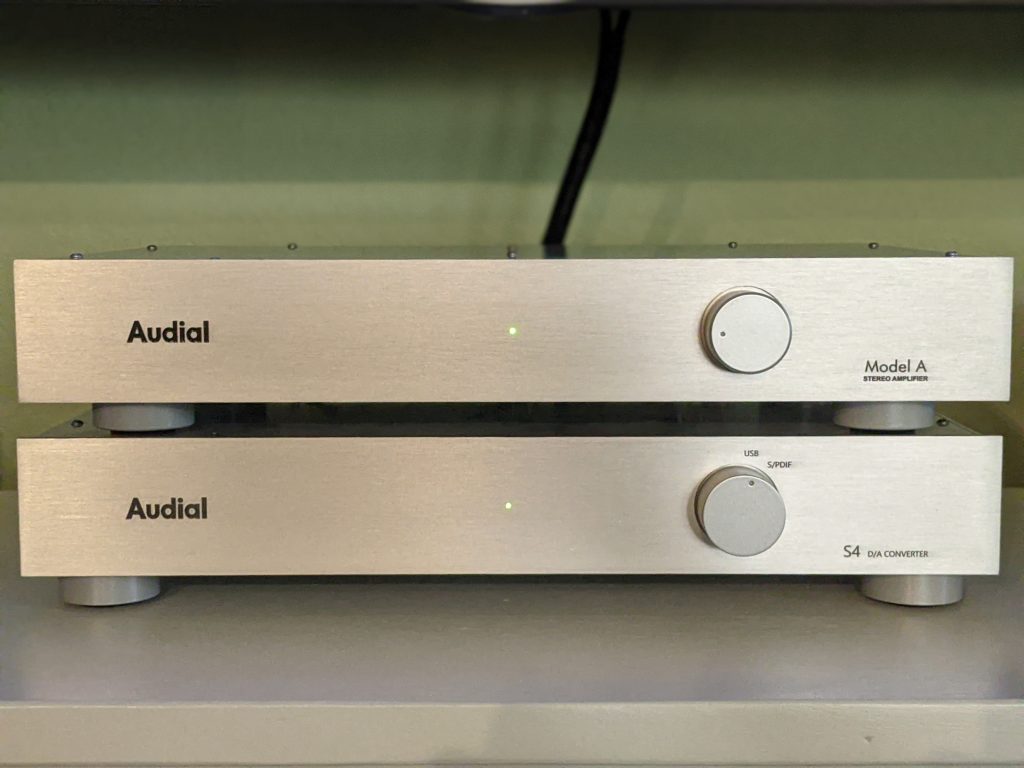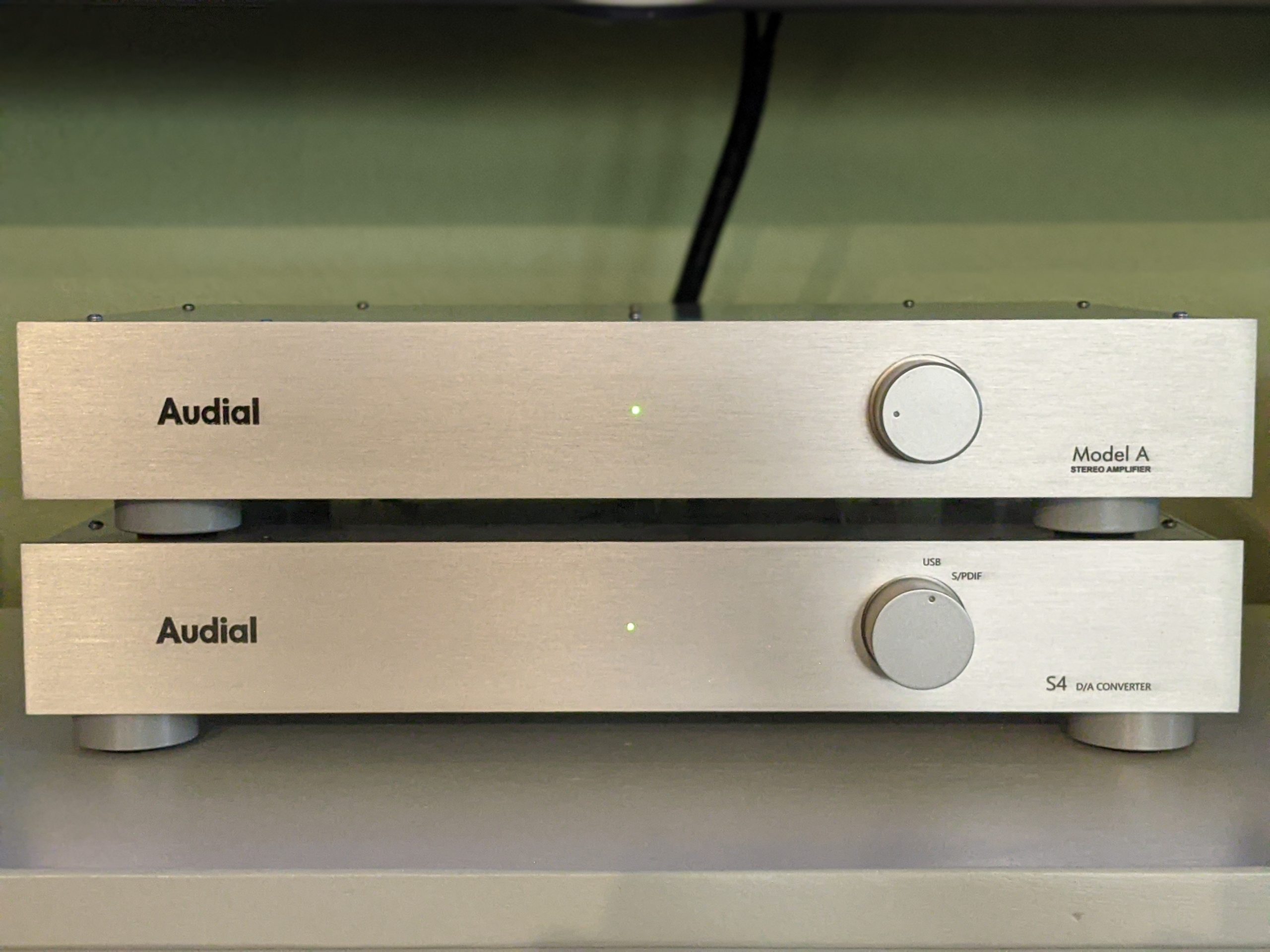How often do you come away completely baffled by a piece of equipment that you’ve heard? Even with the number of components that I’ve had the pleasure of listening to, it happens a fair bit. That’s saying a lot, especially in this day and age where amplification technology has progressed to the point of being audibly transparent. I like to think that every audio enthusiast’s journey is a bit different. Some go straight to “measurements or nothing” while others disregard and stay with vacuum tubes. I’ve been to both extremes and like both equally, albeit for different reasons.

While the operating paramenters of solid state amplifiers has evolved over the years, there is one thing that hasn’t really changed – the input impedance. As long as I can remember (and find), the vast majority of amplifiers (integrated or not) follow the same formula of having a high input impedance – usually in the range of 40-55k Ohms. By constrast, the output impedance of the source is usually ten times lower. This allows the amp to be driven without any concern to accidentally altering the frequency response. Let’s keep that figure in mind, 10x. It will come in handy later.
Basic Specifications
Enter Audial. This is a one-man shop out of Serbia – owned and operated by Pedja Rogic. The Model A is (at the time of this writing) the only amplifier produced. Available in several configurations, mine contains the “premium” upgrade with a single input and pre-amp output.
Alternatively, you can choose two inputs with a switch located on the rear of the unit. While this may work, I would take caution with what is used to drive the Model A. With the shunt potentiometer, the amplifier has an input impedance of 800-1000 ohms. This is rare in that every other integrated or pre-amp (that I’ve seen) has input impedances in the range of 40-50k. It comes with a strong recommendation by Pedja though, claiming that the “real magic” starts to happen below a thousand ohms.
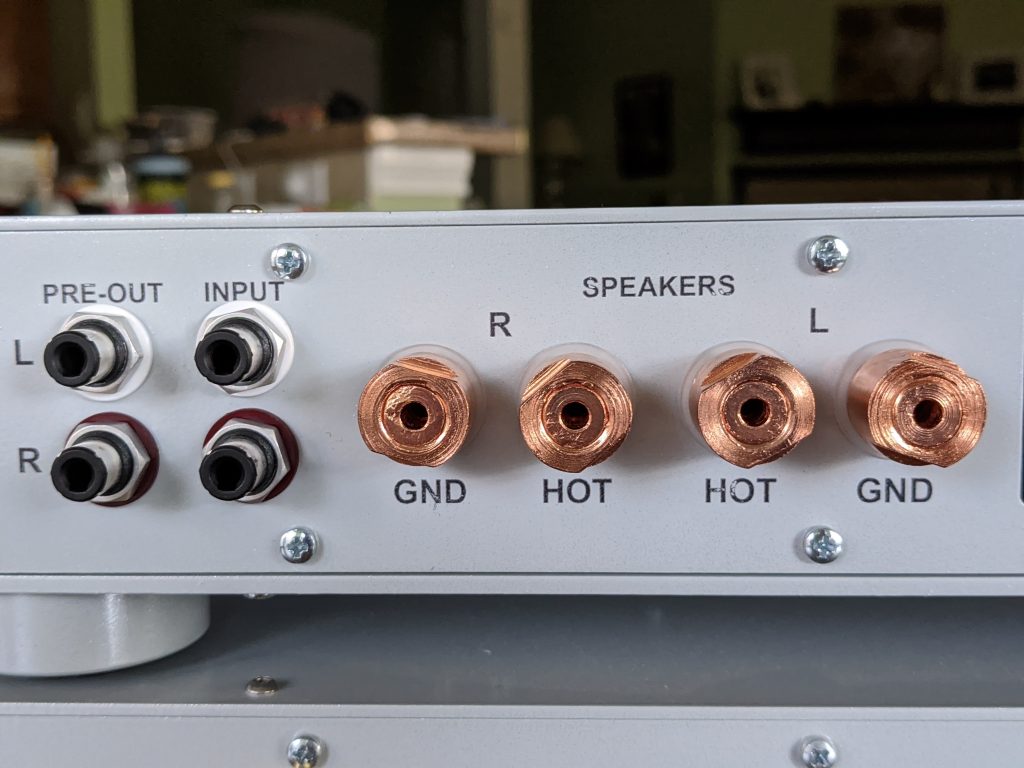
What this low input impedance means in practice though is that the source component driving the Model A must be of equally high quality, outputting a very low impedance and capable of driving said amplifier. As it so happens, Audial’s range of D/A converters are the perfect companion, having an extremely low output impedance.
If you’re looking through the specifications and are found wondering where the remote control is, you’re in for a disappointment. This is definitely an acquired taste, but the Model A doesn’t come with a motorized potentiometer. I kind of get this sentiment though, since the volume rarely changes once you set it for critical listening. Still though, I know I occasionally miss the convenience and would probably pay the upgrade price (if it existed) to get it.
Speaking of though, by the time this review comes out, Audial will have phased out the Model A in favor of an updated A20. Of note is an LCD Display (I assume for volume and input selection), a more “traditional” input impedance with input selector, and(!) a remote control option. Having seen and heard Pedja’s other products, this will be a killer unit.
Inside and Out
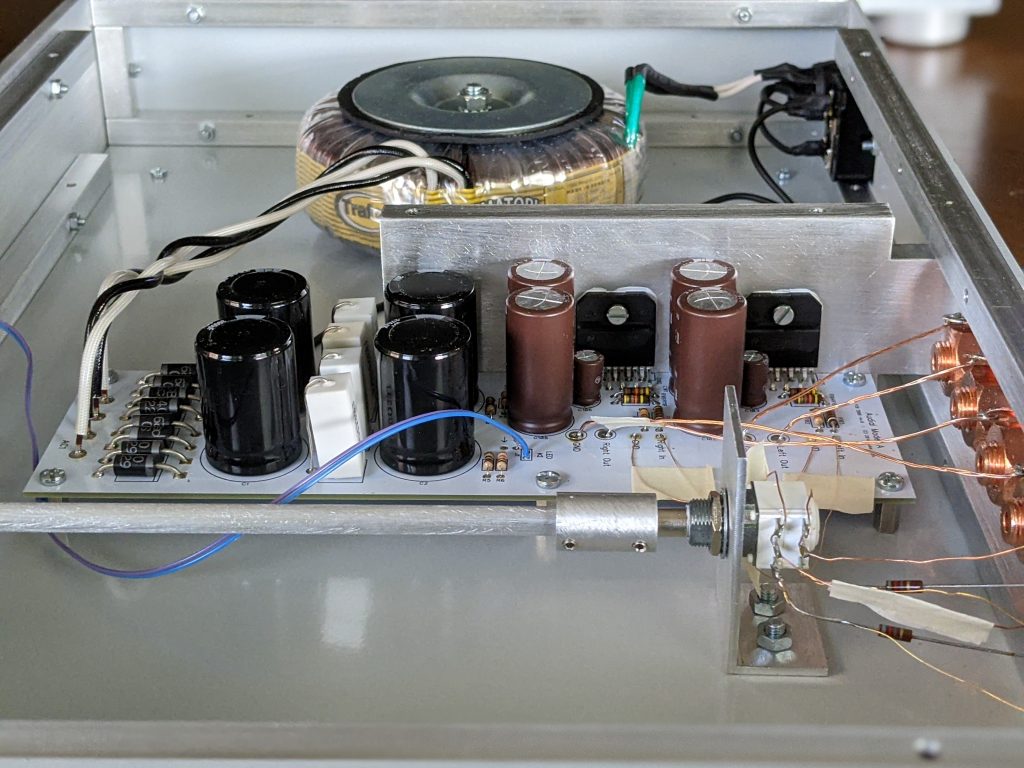
I honestly didn’t know what to expect when I opened the top. The amplifier is lighter than its S4 counterpart, but not so much so that it left me worried. Before opening it up, I’d like to note that the chassis used on mine is non-standard, but instead one to match the dimensions and aesthetics of the S4
Opening it up reveals a rather simple looking interior. You’ve heard the saying that less is more. It’s more impressive than anything that so few components can be used to deliver an amplifier of this quality. I have nothing against this few parts. In fact, quite the opposite. You hear engineers talk of “less components in the signal path”. While I’m not the most learned when it comes to electrical engineering, my computer engineering experience definitely agrees with that statement. Even if every component is near perfect, the more that “touches” the signal, the greater the chance that something could occur. Will it? Hard to say.
I’d also like to note that the chassis is non-standard. I had asked Pedja (of Audial) to use an S4 chassis to the form-factor was similar. It is a pretty great match aesthetically, if I do say so myself.
About The System
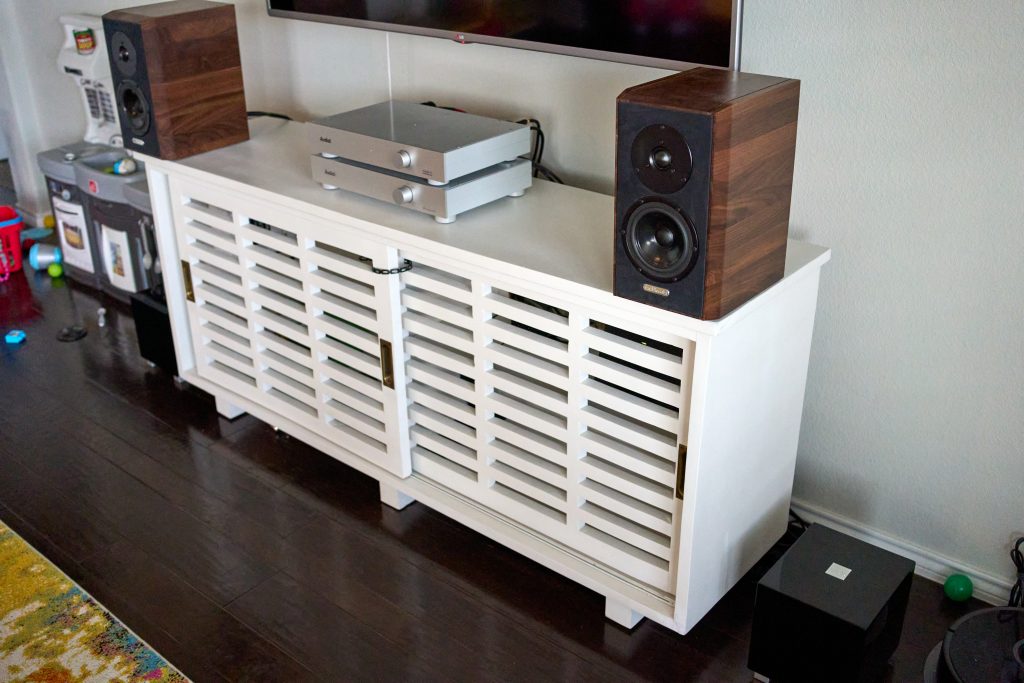
A first in this review, I’ll be talking about the Philharmonic BMR Tower and my impressions while listening to the Audial. It’s a bit unfair to talk about a new component when it’s not the only change in the system, so for most though, I will be using my tried and tested Arteluthe La Piccola + stereo REL combination that I’ve had the pleasure of recently talking about.
So, on the digital front is my reference Audial S4 driving the Audial S4. For the network streamer, I’m using a Raspberry Pi running Roon Bridge connected to the S4 via USB. Sorry, no vinyl this time around – the Model A is simply incompatible with my Rega Aria phono stage.
How Does It Sound?
Onto my favorite part of this hobby, the music. There’s something to be said for cracking open a cold one (or the equivalent if beer isn’t your fancy) and just unwinding listening to your favorite albums.
Starting the review this time around is one that I haven’t come back to for a while, “Home of the Strange” by Young The Giant. When this album came out, it was all the rage around the household. While not a fan of every track, it was (and still is) an enjoyable experience throughout. The opening track “Amerika”, is a secret favorite of mine for the “drum work” and bass-line. The presentation of said bass is something I am rather picky about.
How did the Model A do here? No issues. It rendered both with great aptitude. After having taken a look inside, I really found myself surprised by how well the Model A handled soundstage depth and width.
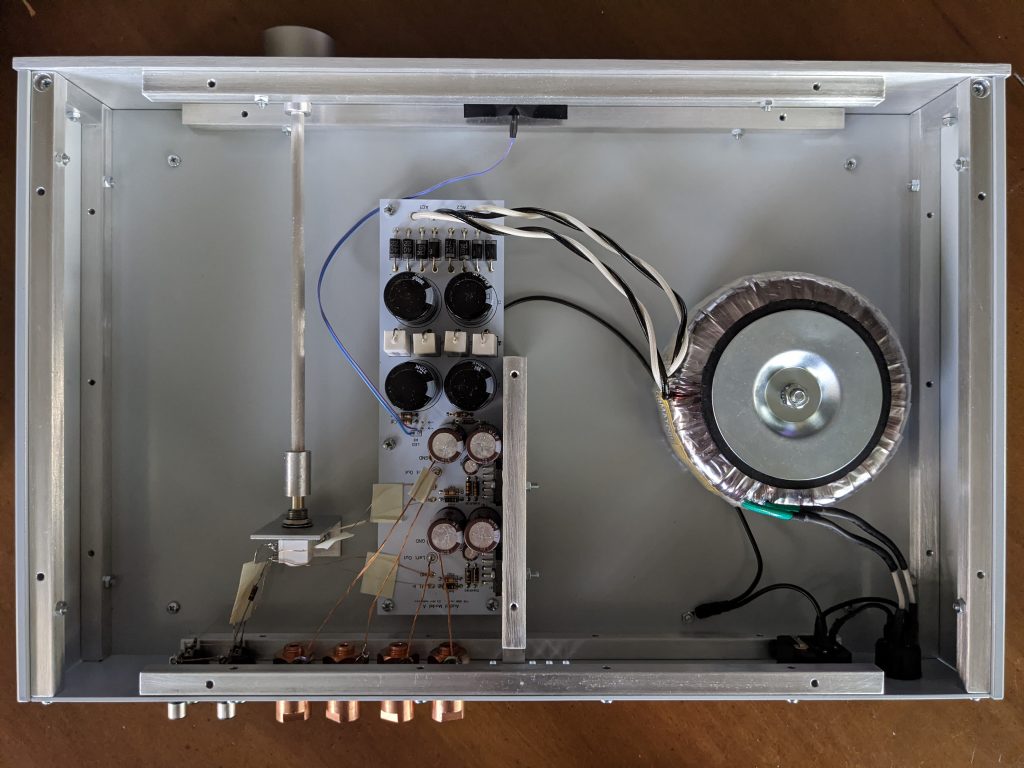
Onto the single “Something to Believe In”, the Model A continues to impress. I never found myself getting bored, which is rather important to me and is contradictory to the engineering side of the house (as I’ve talked about before).
Coming back to the music, the Model A, surprisingly, never seemed to run out of gas when I asked it to perform. That’s not to say it is incapable, just that it always played loud enough for what I needed during these passages in the album.
I want to take a moment to talk about a band (or individual?) that I discovered years ago, Azedia. I decided to queue up on their singles, “Requiem for the New World”. I think most would see this as an odd choice by an obscure artist. But I’ve followed their work closely and am a huge fan in general. Let’s take a moment to talk about this single.
As a lengthy ten minute track, it’s meant to be a journey from beginning to end. In fact, the first line out of the gate says just that. My favorite part though is that it has everything you could ask for when judging a new piece of equipment. Highs, mids, lows – it has you covered. Looking for an expansive soundstage with music that dances about? Check. Deep bass to test your low-end response? Check. Vocals that are perfectly centered to test the front-to-back soundstage? Check.

The reason I keep coming back to this track though is truly just the emotional connection it makes (with me) every time. Goose-bumps from beginning to end. Is it more-so than normal? Compared to my other reference components, I don’t think so.
But that’s a huge win given the price. The bass hits low, the mids are smooth, and the highs well extended. My only gripe, if any, would be power delivery. While the extension is near flawless, I’m still a bit hesitant to turn the volume up pass comfortable levels. It’s not so much an issue with my test speakers, but I have a few in my collection with sensitivities in the low 80’s.
One track isn’t enough, let’s move onto a full length album by Azedia, “Life Goes On”. Depending on my mood, I have a few go-to tracks as my standouts. The opening is always excellent. It features a rather demanding bass-line, and the always masterful mastering with sounds bouncing between both speakers. The Model A performed admirably here. If I had to point out anything, it would be that I wanted to hear a little more oomph in that low-end.
When the third track comes on, Leith Blur, I find myself in the same kind of trance as their single from earlier. The bass hits just right and the vocals are as smooth as you’d expect. This passage doesn’t always work for me across the amplifiers that I own. For example, I didn’t like how this sounded when I reviewed the Muzishare X7. Let me offer a correction – it sounded fine but didn’t seem to convey the emotion I was looking for. With the Audial though, I was able to close my eyes and find myself getting goosebumps all over again. It’s hard to put a pin exactly what was the cause of that, it’s simply what I had written in my notes.
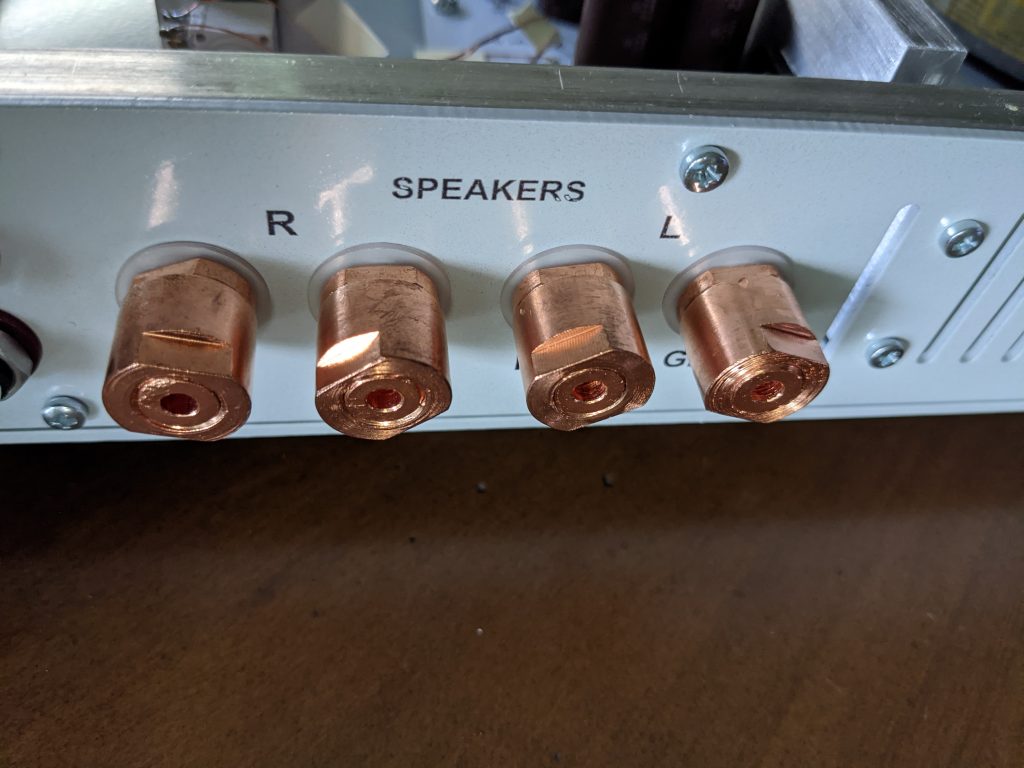
As I continued through the album, a few things became very evident with the Model A; it doesn’t embellish the music. If there are warts, it will detail them. If the music calls for sub 30hz extension, it obliges without complaint. It does all this while being just a pleasant experience for the listener. Once I found the volume I wanted for an album, I never found myself wanting to get up and change it. It was able to just sit there and indulge.
A Note on the BMR Towers
I wanted to take a quick moment to talk about the Philharmonic BMR Towers. I tend to dislike swapping equipment while I’m writing a review, but these towers are so new and exciting that I just had to talk about them.
Unlike my reference monitors, these are exceptionally flat and smooth through the mid-range which resulted in an almost ethereal experience in some of the tracks listed above. While the 8″ Revelator will never be able to compete with dedicated subwoofers, I reckon its output would be enough to satisfy most owners! I can’t wait to talk about this in more detail in upcoming articles (including measurements!)
Minor Annoyances and Other Notes
I thought I’d make note here of things I didn’t get to test with the Model A. I got mine with a single input and single pre-amp out. I did so with the thought that I may be driving amplifiers at some point, but that never came to fruition. In theory, the Model A would work like any other passive pre-amplifier. But it’d be unfair to talk about it since I never actually got to use it.
On the annoyance side, my only real complaint is the volume. I was warned ahead of time that the range of usefulness was small, but I wasn’t prepared for it. I thought my Rega Osiris was bad (with its high-gain amplifier section), but the Model A volume was only really useful between seven and nine-o-clock. Towards the lower end, the channel balance wasn’t great, which was a side effect of the shunted potentiometer.
I ended up leaving it at about eight-o-clock and adjusting volume from Roon. Not my ideal situation, but it worked out well without audible effect. Still, had to take note.
In Conclusion
This was a tricky review as I wasn’t sure what to think going in. In some ways, that could be said to be the ideal way to review components. On the other hand, reviewing a solid state component leaves me a bit conflicted. My engineering side says that there shouldn’t be any difference.
But did my ears agree? Well, yes and no. Ears are easily fooled and perceived biases can easily tilt a review in one direction or the other. Comparing to my reference Osiris, my ears tell me that the only real difference came in the handling of low-end energy. But this may come to no surprise given the difference in wattage output (25 vs 162 at eight ohms). If that’s the only real difference I was able to detect, then I think it’s fair to say that the Model A is a smashing success.
In that sense, it’s a pleasure to recommend Pedja’s Model A… or rather… the A20 that will soon be replacing it. Although I may not get the chance to listen to it for a long while, I have the utmost confidence that it will be a splendid product.

